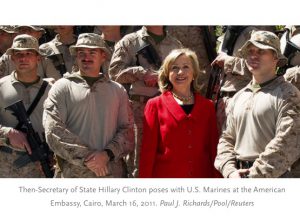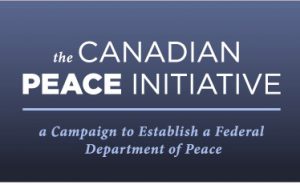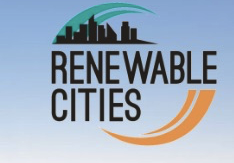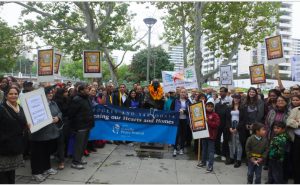…. HUMAN RIGHTS ….
An article by Sarah Aziza for Waging Nonviolence
In wake of the Trump’s election and the president-elect’s renewed vows to deport 2 to 3 million immigrants, organizers across the country are mobilizing to create “sanctuary spaces” for those threatened by the proposed crackdowns. On Wednesday [November 16], thousands of students staged walk-outs on over 80 campuses nationwide, signalling their commitment to maintain “sanctuary campuses” to protect immigrant students. Demonstrators also presented their school administrations with specific demands, including commitments to refuse campus access to Immigration and Customs Enforcement officials, continued support of the Deferred Action for Childhood Arrivals, or DACA, program, and the protection of students regardless of documentation status.
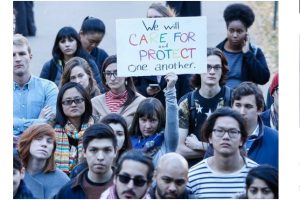
(Facebook/Mazazikh)
(Click on photo to enlarge)
Cosecha organizer Carlos Saavedra was encouraged by the turnout on Wednesday, and says the coming weeks will be crucial for the movement. “The election of Trump has a lot of people angry and fearful, and many — both immigrant and non-immigrant — want to get involved,” he said. “The question for us now is how to channel that energy into an organization that doesn’t back down.”
Saavedra says that while many communities may be affected by the election of Donald Trump, many immigrants, particularly those in the undocumented community, feel “they may be first on the chopping block.” Saavedra worries about his own brother, a DACA “Dreamer,” who may be “one of the first to go” if Trump makes good on his promise to repeal the DACA program.
Cosecha’s long-term goal, says Saavedra, is to change the national narrative surrounding the immigrant community by combating xenophobia and promoting “permanent protection, dignity and respect” for all. The movement is structured horizontally as a network of “activist circles” that each consist of anywhere between 3 and 150 people across the country. Cosecha offers training and action plans for groups, schools and congregations wishing to join their movement, and encourages diversity and daring. “Our movement needs musicians, artists, dancers, creatives, mothers, daughters, workers, street-intellectuals, poets, academics, students,” reads their website. “We encourage risk-taking.”
(Article continued in the right column)
The post-election fightback for human rights, is it gathering force in the USA?
(Article continued from the left column)
Cosecha has already overseen numerous direct actions to both combat anti-immigrant policies and to elevate the visibility of immigrants as a part of the American social fabric. Under the slogan #HechoPorInmigrantes, or “#BuiltByUs,” Cosecha launched a campaign to highlight the role of immigrant labor in the United States.
“We are the pillars of the economy,” Thaís Marques said in a statement released by the movement. “As immigrants, we feel a burning indignation when we listen to politicians, the media and Trump supporters give reasons why we should be deported; why our families should be separated; why our contributions to this country hold no value.”
Cosecha has taken particular aim against Donald Trump’s use of undocumented workers, including his employment of 200 unauthorized workers in the construction of Trump Tower for a wage of $5 a day.
In August, Cosecha members staged a direct action at Trump Tower in Manhattan in August by barricading themselves to the front door in nonviolent protest of Trump’s anti-immigrant rhetoric. The action resulted in several arrests, but the group was back a week later with another act of creative resistance, projecting images of undocumented workers on the gleaming walls of a building directly across the street. In the short film they produced of the action, the workers held signs reading “Sin manos, no hay obra,” or “Without hands, there is no work.”
More recently, Cosecha has worked to raise awareness about the “Buffalo 25,” a group of undocumented workers who — earlier this month — were abruptly rounded up and detained during a restaurant raid in Buffalo, New York. In early November, Members of Cosecha occupied Hillary Clinton’s campaign office in Pittsburgh to draw attention to the 25 detainees, calling on the then-presidential nominee to commit to protecting the rights of the detainees and their families.
Today, Cosecha is working to gather 100,000 signatures for its petition for a targeted boycott. Organizers hope that leveraging consumer power on a mass scale will “break the anti-immigrant consensus that has solidified after Trump’s victory.” Organizer Vera Parra told Hyperallergic “we trust that when the immigrant community uses its economic and labor power to show the broader public what this country would really look like without immigrants, legislation will follow.” Saavedra agreed, saying that while his community is shaken, “there’s also a real sense of resiliency. We’ve been through pain before, and if we can stay serious and organized, we will figure this out.” If done right, Saavedra said, “this could be an opportunity to redefine the country.
